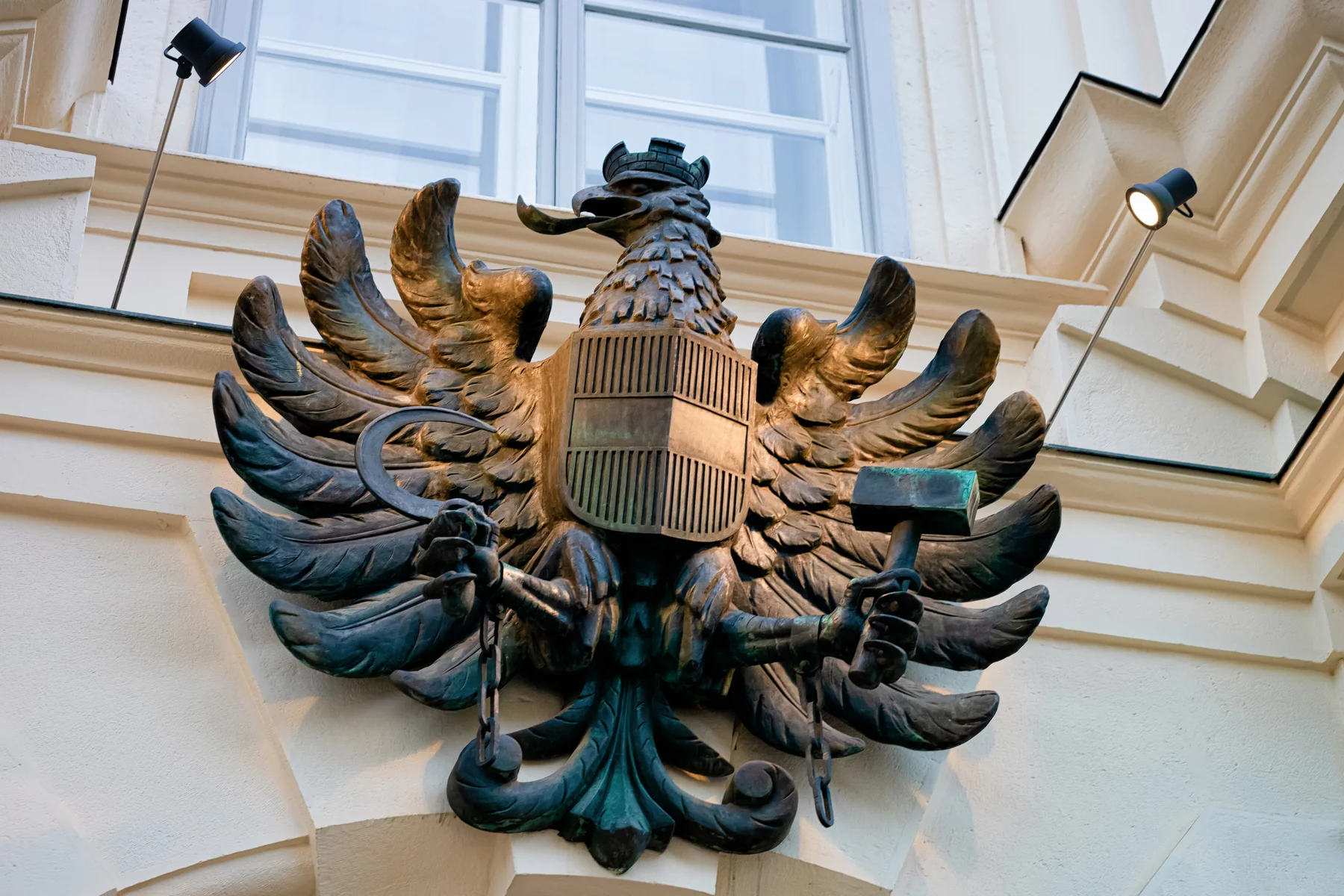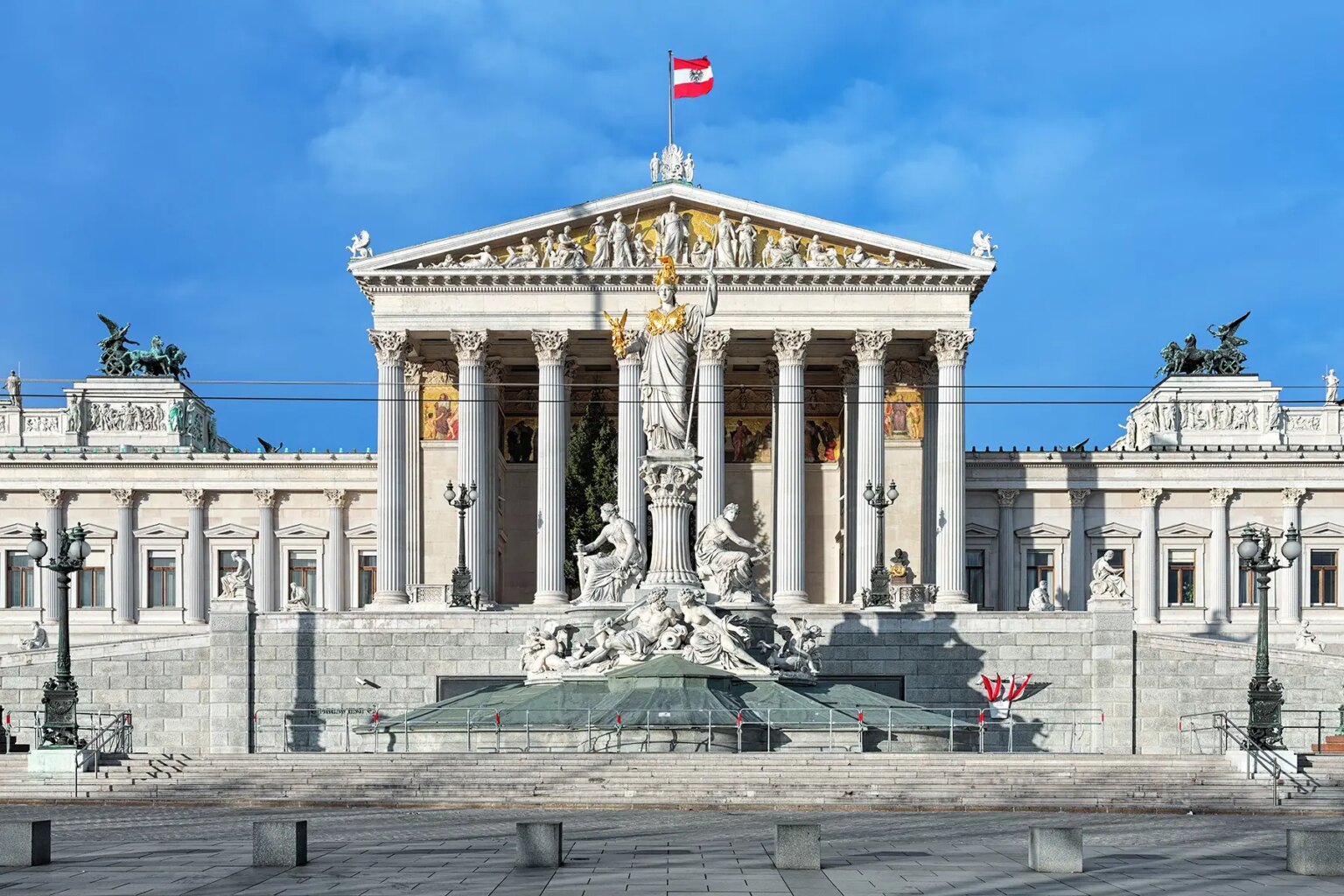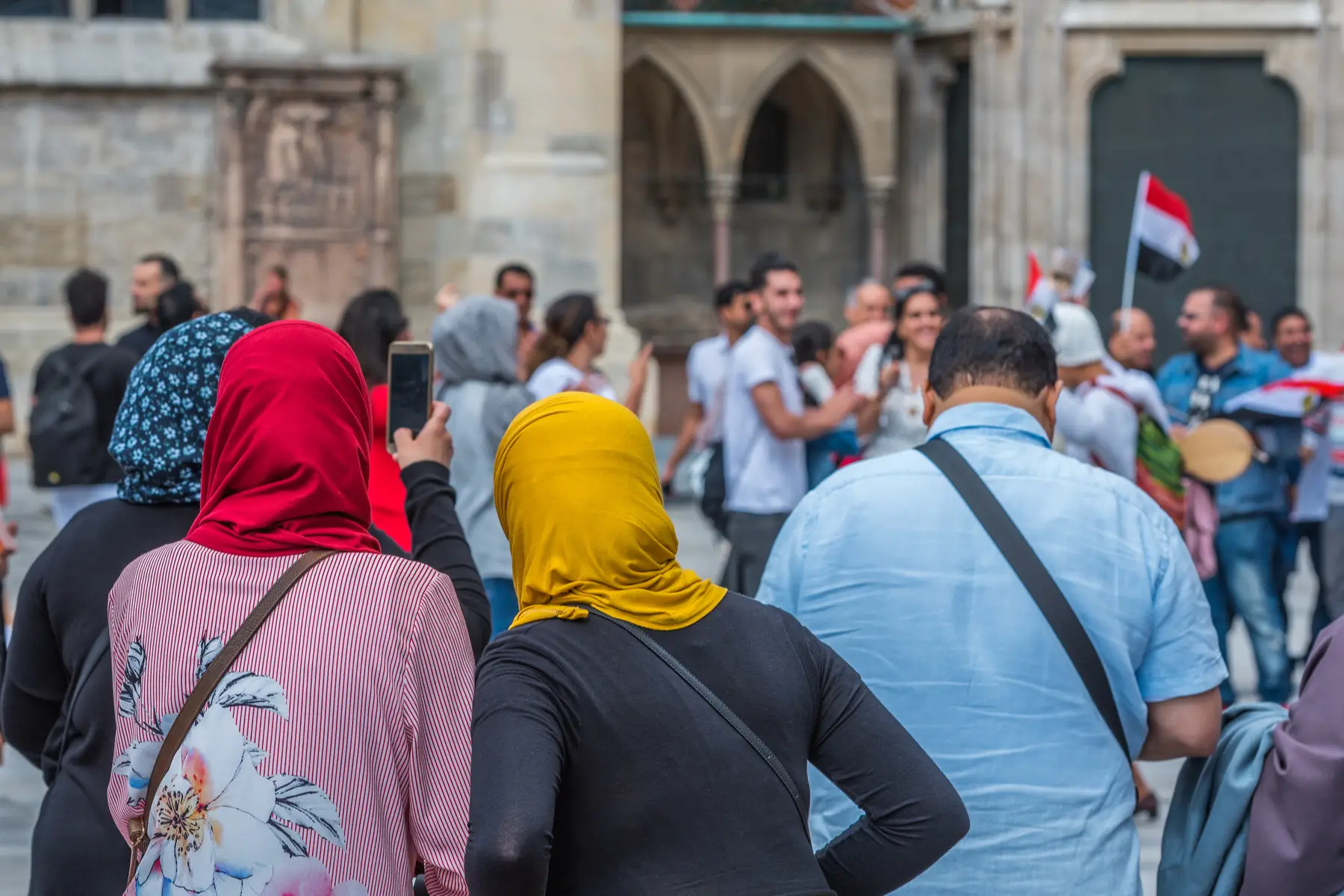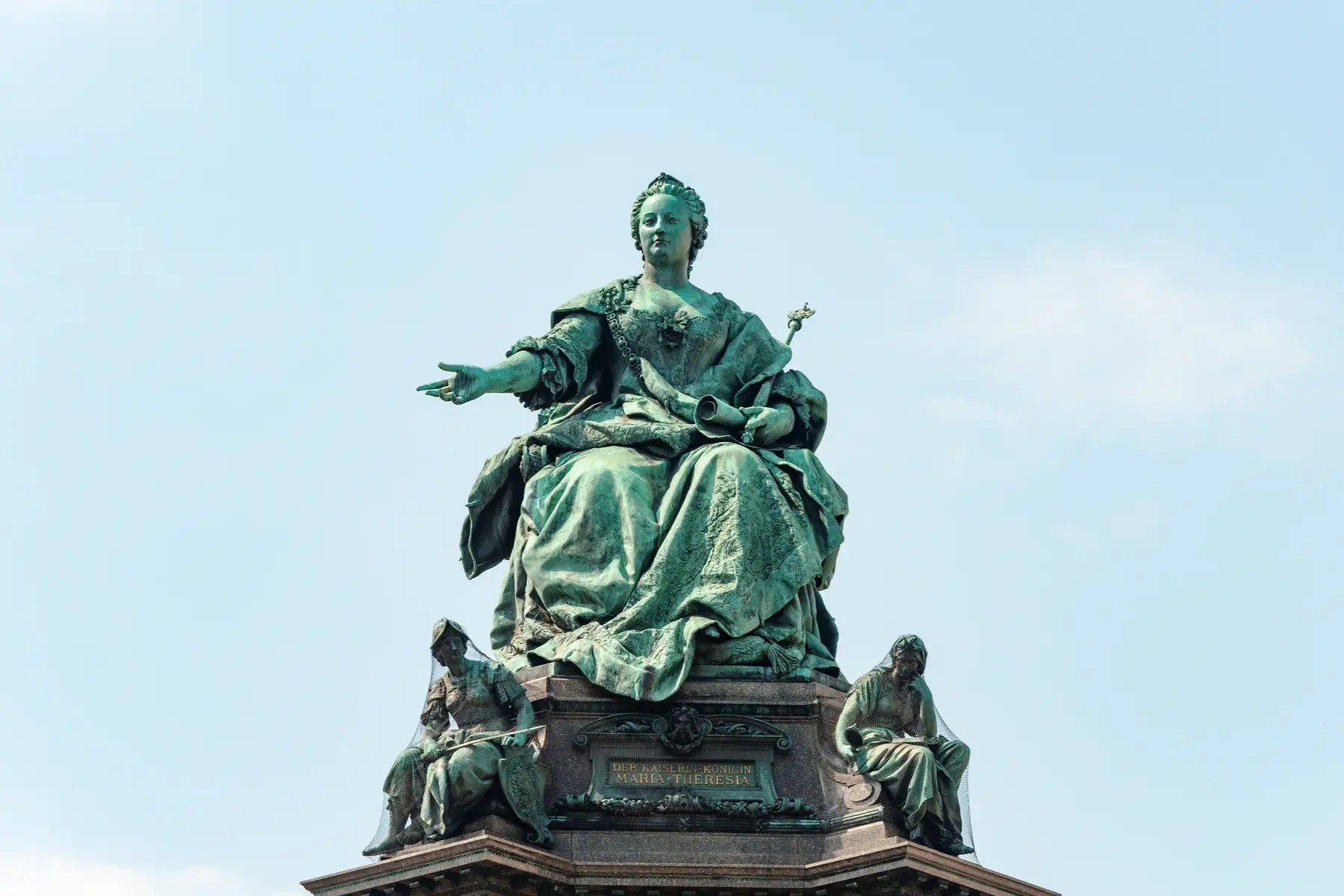Whether you’re voting, following the news, or just need to distract yourself from the rollercoaster ride our world is in, knowing who’s in power (and why!) is always a recommended move. Learn more about Austrian politics, including recent government election results, key political alignments, and the role of the president.
Here’s what you need to know:
- Overview of the Austrian government
- The main political parties in Austria
- President vs Chancellor: who is currently in power?
- The electoral system in Austria
- Political representation in Austria
- What’s the political landscape in Austria?
- What’s the state of the Austrian economy?
- Austrian grassroots politics and activism
- Useful resources
Ground News
Get every side of the story with Ground News, the biggest source for breaking news around the world. This news aggregator lets you compare reporting on the same stories. Use data-driven media bias ratings to uncover political leanings and get the full picture. Stay informed on stories that matter with Ground News.
Overview of the Austrian government
Austria is a federal, semi-presidential republic, uniting the nine autonomous states (Bundesländer) under one national administration. Its head of state is the Austrian president (Bundespräsident), who appoints the chancellor (Bundeskanzler) as head of government.

Similar to other countries, the Austrian government is divided into three branches (i.e., trias politica):
- The executive power lies with the Federal Government (Bundesregierung), whose members are appointed by the President
- The legislature is the Austrian Parliament (Parlament), which consists of two chambers:
- The National Council (Nationalrat), which represents the people (183 seats)
- The Federal Council (Bundesrat), which represents the nine states (60 seats)
- The judiciary comprises the courts and the legal system in Austria
According to the 2024 Democracy Index, Austria ranks 19th in the world and is classed as a full democracy. The country holds National Council elections every five years and Presidential elections every six years. While voting is not mandatory, an incredible 77.7% of the population voted in the 2024 general elections.
You can read more about political rights and freedoms in our article on human rights in Austria.
The main political parties in Austria
Austria has more than 1,300 registered political parties (2024). Indeed, the country believes the more political factions the better the democracy. So, parties can form freely and with relative ease. However, they must get at least 4% of the total votes – or win at least one seat in one of the regional districts – to be represented in the National Council.
The 2024 parliamentary elections saw the following political parties listed on the national ballot:
| Party | German name | Founded in | Party leader(s) | Ideology |
| Austrian Greens | Die Grünen (Grüne) | 1993 | Werner Kogler | Center left to left wing, green politics |
| Austrian People’s Party | Österreichische Volkspartei (ÖVP) | 1945 | Christian Stocker | Center right, conservative, Christian democracy |
| The Beer Party | Bin In Einer Reformbewegung (BIER) | 2015 Party dissolved in February 2025 | Dominik Wlazny | Social liberalism |
| Communist Party of Austria | Kommunistische Partei Österreichs (KPÖ) | 1918 | Günther Hopfgartner | Far left, socialism, communism, Marxism |
| Freedom Party of Austria | Freiheitliche Partei Österreichs (FPÖ) | 1956 | Herbert Kickl | Far right, right-wing populism, national conservatism, pro-Russia |
| Madeleine Petrovic List | Liste Madeleine Petrovic (LMP) | 2024 | Madeleine Petrovic | Center left, green politics |
| NEOS | Das Neue Österreich (NEOS) | 2012 | Beate Meinl-Reisinger | Center, liberalism |
| None of the above | Keine von denen (KEINE) | 2012 | Fayad Mulla | Left-wing progressivism, egalitarianism, post-capitalism |
| Social Democratic Party of Austria | Sozialdemokratische Partei Österreichs (SPÖ) | 1889 | Andreas Babler | Center-left, social democracy |
President vs Chancellor: who is currently in power?
Austria has both a president and a chancellor (what some countries would call a prime minister).
The president is generally the most well-known figurehead. The public elects (and may re-elect) the president for a six-year term. Presidents cannot serve more than two consecutive terms.

Austria’s current president is Alexander Van der Bellen (Austrian Greens). He came to power in 2017 and was re-elected in 2022, receiving 56.69% of the votes. His term runs until 2028.
The president is responsible for appointing the chancellor, the vice chancellor, and the ministers, who collectively form the Austrian government. They can also remove the chancellor, dissolve the cabinet, and rule by decree, but only in extreme cases.
Austria’s current federal chancellor is ÖVP-leader Christian Stocker, who was appointed in March 2025.
The 2024 federal election results in Austria
The most recent parliamentary elections took place in September 2024. Mirroring trends around the world, the far-right, anti-migrant Freedom Party (FPÖ) secured a massive victory, nearly doubling its count from the last election. Meanwhile, the incumbent center-right Austrian People’s Party (ÖVP) suffered a historic loss, handing in 11,2% of the votes (compared to the last election).
Austria’s 2024 voting results are as follows:
| Party | 2024 results (number of seats) | 2019 results (number of seats) | Seats* |
| FPÖ | 28.8% | 16.2% | 57 (+26) |
| ÖVP | 26.3% | 37.5% | 51 (-20) |
| SPÖ | 21.1% | 21.2% | 40 (+1) |
| GRÜNE | 8.2% | 13.9% | 16 (-10) |
| NEOS | 9.1% | 8.1% | 18 (+3) |
| KPÖ | 2.4% | 0.7% | n/a |
| BIER | 2.0% | 0.1% | n/a |
| LMP | 0.6% | – | n/a |
| KEINE | 0.6% | 0.5% | n/a |
Following the election, President Van der Bellen asked then Chancellor Karl Nehammer (ÖVP) to form a cabinet, bypassing the winner, far-right FPÖ. When that failed, FPÖ-party leader Herbert Kickl was given a chance. However, he failed to secure an agreement after weeks of talks with its center-right rivals.

In March 2025, the president swore in the new Austrian government, consisting of the center-right ÖVP, the center-left SPÖ, and the liberal NEOS. With this alliance, the centrist parties prevented the pro-Russian FPÖ from coming to power, despite it winning the most votes in the election.
The electoral system in Austria
Austrian citizens can vote in five types of elections:
- Presidential – every six years
- Parliamentary – every five years
- European Parliament – every five years
- Local (e.g., regional, departmental, and municipal) – every five years
- Referendums – whenever
Austria’s presidential elections are decided by popular vote, using a two-round system. This means that candidates must receive an absolute majority (i.e., more than 50%) in order to win. If no one secures the majority of votes during the first round, there will be a second round. This time, only the top two candidates will compete.
All other elections are determined by proportional representation (PR). In other words, voters can pick their preferred candidate from the party list, and the party with the most votes wins.
Who can vote in Austria?
All Austrian citizens aged 16+ can vote in the country elections. That is, unless their voting rights have been taken away after a criminal conviction.
EU citizens living in Austria can vote in elections for the municipal council and European Parliament. Other foreign residents do not have voting rights.
How to vote in Austria
Voter registration is automatic for Austrian citizens over 16. However, EU nationals must register themselves. You can do this online or through your local town hall (Hauptwohnsitzgemeinde). You can check if you are registered to vote on the government’s public services website.

Austrian elections are typically held on a Sunday. There are many polling stations (Wahllokal) across the country, and you’ll see signs for your local voting place.
At the polling station, you’ll need to bring your voter registration card (also sent automatically) and valid ID. You then receive a ballot paper (Stimmzettel) and are directed to a private booth. If you’re unable to go to the voting station, you can also appoint a proxy. This must be someone from your municipality and you must arrange this in advance of Election Day.
Political representation in Austria
Anyone eligible to vote can stand for public office in Austria. This means that most Austrian citizens over 16 can run for the National Council, while EU citizens can participate in local and European elections.
Austrian citizens must be over 35 to run for the presidency.
Interestingly, although the country does not have gender quotas to improve female political representation, a number of parties have set voluntary targets. For example, the SPÖ was the first one to adopt a 25% women’s quota in as early as 1985. The party is currently aiming for 40%. Meanwhile, coalition partner ÖVP strives to have at least 33.3%.
With 66 out of 183 members being female, the number of women MPs sits at 36.1% (2024). This is above the European average of 31.8%.
What’s the political landscape in Austria?
The history of politics in Austria
For almost two thousand years (give or take), Austria has been part of an empire. First were the Romans, of course, who ruled the lands south of the Danube from 0 to 500 CE. After the fall of that power, the country fell into the hands of the Bavarians and was later usurped into the Carolinian Empire (around 790).
When Charlemagne died in 814, his dynasty slowly collapsed. Austria changed several hands until it was made an independent duchy (and later archduchy) of the Holy Roman Empire in 1156. This regime lasted quite a while – and was finally dissolved in 1806.

Austria then did a series reboot, changing its name to the Austrian Empire. In 1867, it partnered up with Hungary, forming the Austro-Hungarian Empire. Of course, we all know how that ended: in World War I.
The country as we know it today was formed in 1919 and again in 1955, after a dalliance with Nazi Germany and occupation by the Allied forces. Since regaining its independence, Austria has been a stable democratic republic that’s been mostly governed by a SPÖ/ÖVP coalition.
Austria and the European Union
Austria officially joined the European Union (EU) in 1995, which was founded two years later. The country also joined the Eurozone in 1999, replacing its currency, the Schilling, with the Euro.
While Euroscepticism has always been high in Austria, the possibility of a future EU-Austritt is currently not on the table. According to a 2024 Austrian National Election Study, only 26.0% of Austrians want to leave, whereas 48.9% would vote to remain. Almost a quarter of the respondents (25.1%) are undecided.
What are the current political tensions in Austria?
As is evident from the far-right surge during the most recent elections, immigration remains a contentious topic in Austria.
Following the fall of Syria’s President Bashar al-Assad in December 2024, the Austrian government suspended the processing of asylum applications. It also started planning the repatriation and deportation of Syrians. This move has sparked debates over the country’s immigration policies and humanitarian obligations.

Meanwhile, Austria’s historical neutrality and its relations with Russia are also under scrutiny. The election winner FPÖ is pro-Russia and Western allies have expressed concerns about the country’s reliability in intelligence-sharing. Of course, now that the party has been excluded from the Austrian coalition government, these concerns may subside.
Indeed, the new government has reaffirmed its commitment to Ukraine and backing of EU-wide sanctions against Russia. According to its coalition agreement, it’ll also attempt to solve the migration issue by maintaining strict deportation procedures while also expanding integration programs. Finally, the government has agreed to a budget compromise that will balance fiscal consolidation with investment in social welfare and economic growth.
What’s the state of the Austrian economy?
Austria has the fifth highest GDP per capita in the EU, after Luxembourg, Ireland, the Netherlands, and Denmark. Its gross domestic product (GDP) is €473.2 million, which works out to €45,700 per capita (2023).
The country’s main industries are food and luxury commodities, mechanical engineering and steel construction, chemicals, and vehicle manufacturing. That said, tourism is also an essential pillar of the Austrian economy, seeing as it has one of the largest natural land reserves in central Europe.
The International Monetary Fund (IMF) projects that Austria’s Real GDP will grow by 1.1% in 2025. This percentage is below the average growth rate for EU economies, which the European Commission forecasts to be 1.3%.
You can read more about inflation and average prices in our article on the cost of living in Austria.
Austrian grassroots politics and activism
Grassroots activism and citizen-led movements have long played a role in Austria’s political scene.
One of the most significant victories in the country was the anti-nuclear movement of the 1970s. Activists successfully campaigned against the use of atomic energy and even helped establish a national park.

More recently, climate change activism has gained momentum. Groups like Fridays for Future Austria and System Change, not Climate Change, have led rallies demanding stronger environmental policies and stricter climate protection laws.
The rise of right-wing politics in Austria has also sparked resistance. For example, Omas gegen Rechts (Grannies Against the Right) actively protests against far-right extremism, racism, and antisemitism. And in early 2024, thousands of Austrians marched in Vienna to oppose the far-right FPÖ before coalition talks began.
The war in Gaza is also causing civil. Pro-Palestinian protests have taken place across the country, with activists calling for stronger political action and humanitarian support. They are often met with counter-protests and government restrictions, citing concerns over antisemitism and public order. During the 2024 election, the political party Gaza List (Liste Gaza) – which ran with the slogan “Vote Against Genocide” – appeared on the ballot in seven out of nine states.
Ways to get involved in Austrian politics or government issues include:
- You can start or join a local activist group.
- If you are an EU citizen, you can get involved in local politics. This could include attending municipal or communal meetings or even running for local office.
- If you work in Austria, you could join a trade union. Although membership is somewhat on the decline, workers’ unions have a fair amount of political power and are good at mobilizing das Volk (the people).
Useful resources
- Österreich.gv.at – government website with information on elections and voting in Austria
- Parliament Austria – government website with information on Austrian politics
- Migration.gv.at – government website with information on living and moving to Austria, as well as the government and political system








